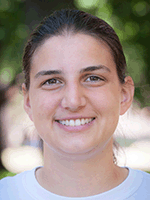
Pick the Best Pasteurizer – Sonia Gelsinger, Pennsylvania State University
 By Sonia Gelsinger, Pennsylvania State University Ph.D. student
By Sonia Gelsinger, Pennsylvania State University Ph.D. studentWe all know how important a balanced ration is for maintaining cow health and optimizing milk production. High quality nutrition is equally important for the calves that will eventually become part of the lactating herd.
The gut of a young calf is still developing, so it requires protein and energy sources that are easily digestible. A plethora of milk replacer products are designed to meet these requirements, but many dairies have found waste milk to be cost-effective and research has shown that it is also highly nutritious for feeding calves. However, the nutrients in waste milk are not only great for calves, but they are also an ideal medium for growing bacteria.
Pasteurization is a management practice that helps ensure we provide calves with high-quality nutrition without increasing their pathogen load.
Three types of pasteurizers are available for waste milk: Batch, high-temperature-short-time (HTST), and ultraviolet light (UV).
When considering the type of pasteurizer to purchase, ask yourself three questions:
1. How does it work?
2. Is it effective?
3. What are the critical control points to monitor?
Heat pasteurizers kill bacteria by raising the milk to a temperature where the proteins and fats that make up the bacterial cells lose their structure. That temperature is maintained until the cells cannot regain their original structure. When this occurs, the bacteria cells can no longer function and they die.
Batch pasteurizers slowly heat a large volume of milk to 145 degrees F for 30 minutes and HTST pasteurizers heat a small volume of milk to 161 degrees F (72 degrees C) for 15 seconds.
The same temperature-time combinations are used for milk sold for human consumption. Many controlled research studies and field trials have shown both methods to be effective in reducing bacteria from the environment, mastitis and Johne’s disease. The critical control point for these pasteurizers is to ensure that the milk is being held at the appropriate temperature for the full duration.
The third type of pasteurizer uses UV light to inactivate bacteria. Rather than heating the milk, the UV pasteurizer exudes UV radiation to change the structure of bacterial DNA, rendering the bacterial cells incapable of reproduction.
The challenge for UV pasteurizers is penetration of the light, because the radiation can also affect milk protein, fat or lactose. When that happens, it cannot affect the bacterial DNA.
Therefore, it is critical to ensure that the surface around the light is clean and the bulb is bright. The bulb should be changed at least once per year or anytime the indicator light is displayed.
The few studies that investigated the effectiveness of UV pasteurization of milk show that it can reduce bacteria, but to a lesser extent compared to heat. A field study using eight Pennsylvania farms showed that UV light could reduce total bacteria by 29 percent, whereas a similar study showed a 53-percent decrease with heat pasteurizers. Both the Pennsylvania field study and other studies with lab-scale UV pasteurizers found the method most effective for the mastitis pathogen Staphylococcus aureus (82-percent reduction). However, UV pasteurizers are not very effective in reducing Johne’s disease organisms.
Regardless of the type of pasteurizer, it is important to collect milk samples before and after pasteurization to ensure the bacteria numbers are reduced. Keep in mind that pasteurization is designed to reduce, not eliminate, bacteria. If milk contains very high numbers of bacteria prior to pasteurization, heat or UV light will reduce the number, but it may still be too high to feed to calves. Dr. Sheila McGuirk, veterinarian with the University of Wisconsin-Madison, recommends a total bacteria count below 10,000 cfu/mL for feeding to calves.
It is also important to ensure that all aspects of the calf feeding system are cleaned routinely, including equipment used to move milk to and from the pasteurizer and equipment used for feeding calves.
When managed properly, pasteurizers are an excellent tool, enabling dairy producers to steward their resources and provide calves with nutrients that allow them to succeed as heifers and, eventually, cows in the lactating herd.
| Category: |
Equipment Starting Strong - Calf Care |

